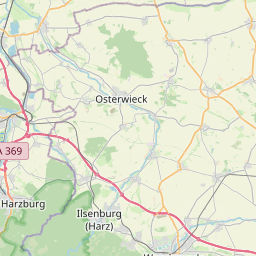






Description: Das Projekt "FP5-EESD, Biodiversity and Human Impact in Shallow Lakes" wird/wurde gefördert durch: Kommission der Europäischen Gemeinschaften Brüssel. Es wird/wurde ausgeführt durch: Universität Frankfurt, Zoologisches Institut.Objective/Problems to be solved: If sustainable management and restoration of biodiversity is to be successful, it is important to have cost-effective methods for reliable large-scale monitoring of biodiversity, to be able to assess the current state of biodiversity, determine trends and patterns and to evaluate the effectiveness of restoration measures. In addition, there is an urgent need for tools to predict the effects of human activity and restoration measures on the biodiversity of target ecosystems. The proposed project aims at providing the necessary methodologies and tools (indices, indicator species lists, predictive mathematical models) for monitoring biodiversity and assessing human impact on biodiversity in a specific type of habitat that is important in many areas of Europe: mesotrophic to eutrophic shallow lakes that are subject to natural or cultural eutrophication. Shallow lakes are abundant in Europe, are ecologically and economically very important, and are subject to many threats. Scientific objectives and approach: The objectives of BIOMAN are (1) to develop reliable and cost-effective indices for measuring overall biodiversity in the water column of shallow water bodies; (2) to develop mathematical tools that allow prediction of the effects of human impact on biodiversity in shallow waters, including the prediction of the response to restoration measures; (3) to compile a database on the current state of biodiversity in a representative sample of European shallow bodies, covering the classical food web (fish, zooplankton, phytoplankton) as well as the microbial loop (bacterioplankton and heterotrophic protists), and also covering genetic diversity of zooplankton and diversity as measured through the egg bank; and (4) to develop a reliable method to evaluate the success of restoration measures. In a large-scale field survey covering 96 shallow standing waters along a north-south gradient in Europe, we focus on organisms occurring in the water column, belonging to the microbial loop (bacteria, heterotrophic nanoflagellates, ciliates) and the classical food web (phytoplankton, zooplankton, fish). The ponds and lakes studied differ widely in the degree of human impact (relatively pristine and successfully restored habitats versus heavily impacted ones), degree of isolation, structural diversity, nutrient loading and size. We compare different measures of biodiversity in terms of the indices used (e.g. Hill numbers), the functional resolution (trophic level), the type of biodiversity measured (taxon diversity, genetic diversity within taxa) and the approach used for taxon delimitation (morphological or genetic criteria)... Prime Contractor: Katholieke Universiteit Leuven, Departement Biologie, Faculteit Wetenschappen, Laboratory of Aquatic Ecology; Leuven/Belgium.
SupportProgram
Origins: /Bund/UBA/UFORDAT
Tags: Speisefisch ? Gewässerökologie ? Seen ? Meteorologie ? Eutrophierung ? Fisch ? Nährstoff ? Phytoplankton ? Zooplankton ? Stillgewässer ? Biodiversitätsmonitoring ? Habitat ? Bakterien ? Artenliste ? Bioindikator ? Ei ? Flachwasser ? Monitoring ? Taxonomie ? Trophiegrad ? Sanierungsmaßnahme ? Genetische Vielfalt ? Wasserkörper ? Europa ? Bewertungskriterium ? Umweltschutz ? Datenerhebung ? Gewässer ? Anthropogener Einfluss ? Ökosystem ? Nachhaltige Bewirtschaftung ? Biodiversität ? Regeneration ? Datenbank ? Kenngröße ? Fischerei ? resources of the sea ? forecasting ? See [Binnengewässer] ?
Region: Hessen
Bounding boxes: 10.779° .. 10.779° x 52.01702° .. 52.01702°
License: cc-by-nc-nd/4.0
Language: Englisch/English
Time ranges: 2000-01-26 - 2003-01-25
Accessed 1 times.